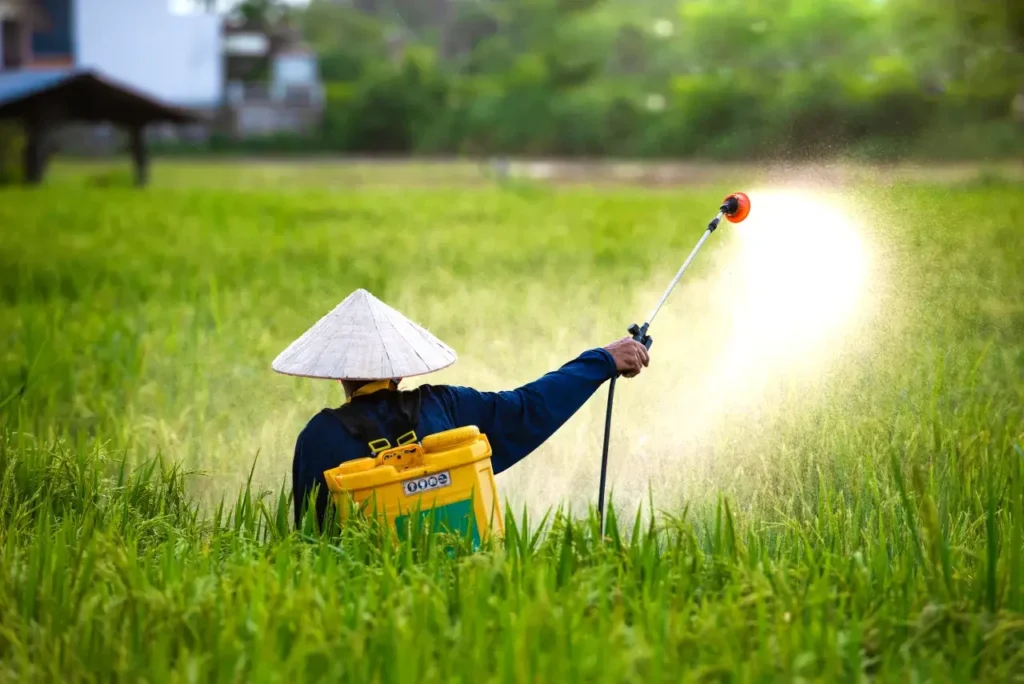In its relentless pursuit of food security for over 1.4 billion citizens, China has embraced a high-input agricultural model that prioritizes yield over sustainability. Fertilizers, pesticides, herbicides and growth stimulants are deployed on a massive scale across the country’s farmlands, transforming once-fertile soils into chemically saturated zones. While this strategy has helped China maintain self-sufficiency in staple crops like rice, wheat and corn, it has come at a steep environmental and human cost: one that is increasingly difficult to ignore.
Across China’s vast agricultural heartlands, the overuse of synthetic chemicals has triggered widespread contamination of underground aquifers, rivers, lakes and ponds. These water bodies, once vital sources of drinking water and irrigation, now carry toxic residues that threaten ecosystems and public health alike. The problem is not isolated to a few regions – it spans from the industrialized farms of Hebei and Shandong to the rice paddies of Hunan and the vegetable belts of Guangdong.
According to the Second National Pollution Source Census Bulletin, agricultural sources in China emitted 1.41 million tons of total nitrogen and 0.21 million tons of total phosphorus, accounting for 46.5% and 67.2% of the country’s total water pollutant emissions, respectively. These figures underscore the scale of agricultural runoff contaminating China’s freshwater systems. In some provinces, up to 70% of groundwater samples have tested positive for chemical pollutants linked to fertilizer and pesticide use.
Rivers like the Huai and Yangtze, which support millions of homes and livelihoods, are increasingly burdened by eutrophication, an oxygen-depleting process caused by nutrient overload that kills aquatic life and renders water unfit for consumption. This degradation is not just ecological; it is economic and social, affecting fisheries, drinking water access, and rural health outcomes.
The contamination is not limited to water. A 2025 study published in Science (Journal) revealed that vast stretches of southern China are polluted by toxic heavy metals such as cadmium, arsenic and nickel. Cadmium alone exceeds safe levels in 9% of soils globally, with hotspots in southern China and neighbouring South Asian regions. These metals do not degrade over time, making them persistent threats to soil fertility and food safety.
Soil degradation is accelerating, with heavy metals and persistent organic pollutants accumulating in farmland at alarming rates. These chemicals not only reduce soil productivity, but also enter the food chain through crops, livestock and fish. Traces of banned pesticides and carcinogenic compounds have been detected in vegetables sold in urban markets, raising serious concerns about long-term health impacts.
Despite mounting evidence, China’s regulatory response remains tepid. Local governments often lack the capacity or the political will to enforce environmental standards, especially when agricultural output is tied to economic performance metrics. The Ministry of Agriculture has issued guidelines on “green farming” and “zero growth” in fertilizer use, but implementation is patchy and undermined by entrenched incentives to maximize yield at any cost.
The health consequences of this chemical dependence are sobering. Rural communities living near intensive farming zones report higher incidences of gastrointestinal disorders, skin diseases, and even cancers. Children exposed to contaminated water sources are particularly vulnerable, with some regions showing elevated rates of developmental issues and birth defects. Yet these stories rarely make it into official narratives, which continue to celebrate agricultural productivity as a triumph of national planning.
China’s approach reflects a broader tension between short-term food security and long-term ecological resilience. Feeding a massive population is undeniably a logistical challenge, but doing so through chemical saturation is a dangerous gamble. The country’s agricultural model, built on the ethos of “more inputs, more output,” is now colliding with the limits of environmental tolerance.
There are alternatives. Integrated pest management, organic farming, crop rotation and precision agriculture offer pathways to reduce chemical dependency while maintaining productivity. Some pilot programs in Zhejiang and Sichuan have shown promising results, with farmers adopting bio fertilizers and natural pest deterrents. However, scaling these initiatives requires systemic reform, rethinking subsidies, retraining farmers, and investing in sustainable technologies.
China’s leadership must also confront the human cost of its agricultural strategy. The health of its citizens cannot be sacrificed at the altar of production targets. Transparent monitoring, public disclosure of contamination data, and community-led water testing programs are essential steps toward accountability. Moreover, environmental NGOs and independent researchers must be empowered, and not suppressed, to investigate and report on the true extent of chemical pollution.
China’s agricultural practices have implications beyond its borders. Contaminated runoff flows into transboundary rivers, affecting neighbouring countries. Exported food products may carry chemical residues that violate safety standards elsewhere. As the world’s largest producer and consumer of agricultural chemicals, China has a responsibility to lead, not lag, in the global transition toward sustainable farming.
The stakes are high. Continued chemical overuse will not only degrade China’s natural resources but also erode public trust in its food system. The illusion of abundance cannot mask the reality of poisoned water, toxic soil, and compromised health. If China is to truly nourish its people, it must shift from chemical intensity to ecological integrity.
In the end, the question is not whether China can feed its population: it is whether it can do so without poisoning the very land and water that sustains life. The answer lies not in more chemicals, but in more courage: the courage to reform, to regulate, and to prioritize health over harvest.







